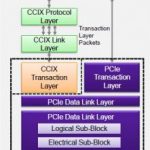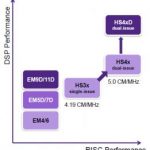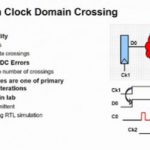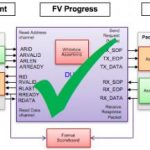Synopsys PrimeTime PX, popularly known as PT-PX, is widely recognized as the gold standard for power signoff. Calculation is based on a final gate-level netlist reflecting final gate selections and either approximate interconnect parasitics or final parasitics based on the post-layout netlist. The only way to get more accurate… Read More
CCIX Protocol Push PCI Express 4.0 up to 25G
The CCIX consortium has developed the Cache Coherent Interconnect for Accelerators (X) protocol. The goal is to support cache coherency, allowing faster and more efficient sharing of memory between processors and accelerators, while utilizing PCIe 4.0 as transport layer. With Ethernet, PCI Express is certainly the most popular… Read More
An InFormal Chat
Any sufficiently advanced technology is indistinguishable from magic, as the saying goes. Which is all very well when the purpose is entertainment or serving the arcane skills of a select priesthood, but it’s not a good way to grow a market. Then you want to dispel the magic aura, make the basic mechanics more accessible to a wider… Read More
Is ARC HS4xD Family More a CPU or DSP IP Core?
When I had to define the various IP categories (processor, analog & mixed-signal, wired interfaces, etc.) to build the Design IP Report, I scratched my head for a while about the processor main category: how to define the sub-categories? Not that long ago, it was easy to identify a CPU IP core and a DSP IP core. As of today, if a DSP… Read More
Webinar: Getting to Accurate Power Estimates Earlier and Faster
Power has become a very important metric in modern designs – for mobile and IoT devices which must live on a battery charge for days or years, for datacenters where power costs can be as significant as capital costs, and for increasingly unavoidable regulatory reasons. But accurate power estimation on a design must start from an … Read More
CDC Verification for FPGA – Beyond the Basics
FPGAs have become a lot more capable and a lot more powerful, more closely resembling SoCs than the glue-logic we once considered them to be. Look at any big FPGA – a Xilinx Zynq, an Intel/Altera Arria or a Microsemi SmartFusion; these devices are full-blown SoCs, functionally different from an ASIC SoC only in that some of the device… Read More
Building Better Digital Content Protection
Back in college my roommates figured out that the TV cable coax wire was still connected to our apartment. As a result, I was able to watch the Richard Pryor movie Silver Streak about 30 times without a cable box, however the screen was partially jumbled from the simple content protection used back then. This was possible by aggressively… Read More
Polishing Parallelism
The great thing about competition in free markets is that vendors are always pushing their products to find an edge. You the consumer don’t have to do much to take advantage of these advances (other than possibly paying for new options). You just sit back and watch the tool you use get faster and deliver better QoR. You may think that… Read More
Data Center Explosion Push for Fast Adoption of 25G
The data center rack server market is estimated to growat a high Compound Annual Growth Rate (CAGR) of 20% to reach $90 billion by 2021. Such growth is due to the significantly rise in the number of connected devices, the growth in the volume of data per device and theneed for quick processing of high-volume data. Much of these data … Read More
Quantifying Formal Coverage
Verification coverage is a tricky concept. Ideally a definition would measure against how many paths were tested of every possible path through the complete state graph, but that goal is unimaginably out of reach for any typical design. Instead we fall back on proxies for completeness, like hitting every line in the code. This … Read More











